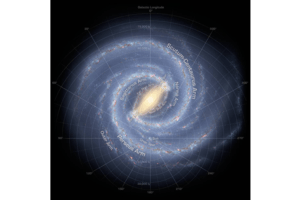
Knowing Our Galaxy From Within
A study, published in Science Advances, contain new models of the Milky Way that suggest our galaxy may not be a perfect spiral. The research team of international scientists wanted to figure out if the Milky Way matches the spiral shape observed in other galaxies, as part of a larger study that aims to sharpen our image of our galaxy.
It’s not easy to answer, however, because we are right in the middle of the galaxy, making it impossible to get the same views that we enjoy of other galaxies. Therefore, scientists turn to models to approximate our shape as best as possible. “The fundamental problem for the Milky Way is that it’s a disk-like system and we’re inside the disk,” Mark Reid, astronomer at the Harvard-Smithsonian Center for Astrophysics and co-author of the study, says in an interview with The Christian Science Monitor.
Thus, the team set out to study radio wavelengths. They mapped out how far star-forming regions were from the sky, using the National Radio Astronomy Observatory’s Very Long Baseline Array of telescopes, and calculating how far these war form Earth.
Their results showed that our solar system’s spot in the Milky Way (dubbed the Local Arm or the Orion Spur) is a substantial arm — larger than previously thought, and isn’t just a spur from a fully-grown system.

Selfie of Galactic Proportions
The study, like most research done on our galaxy and space in general, uses models born from calculations.
But what if it’s actually possible to see the Milky Way, and to confirm whether the study is correct? It would probably take some years to complete a picture of our galaxy. The good news is, it will be done soon. NASA’s James Webb Space Telescope (JWST), to be launched by 2018, is going to help give us an image of the galaxy and even the universe.
More powerful and sensitive than the Hubble and other telescopes that came before it, the JWST can surely give us a selfie of our galaxy like we’ve never seen before. And perhaps more.